STL279: Don’t forget about Fun Woodworking
Asa Christiana joins Mike and Ben to discuss tool libraries, the best way of fairing curves, and what one listener might be doing wrong with their hand plane.This episode is sponsored by Woodcraft.
| You can check out and order Asa’s new book, Build More Stuff with Wood at the Taunton Store and on Amazon.
Build skills and confidence, project by project. Asa Christiana is back with the second book in the “Build Stuff with Wood” series, a down-to-earth path into the craft of woodworking, designed for people of all backgrounds and budgets. Build More Stuff with Wood showcases basic tools and three affordable woodworking machines – a portable table saw, a benchtop drill press, and a handy sanding unit – helping you hone the skills needed to use them safely, and opening the door to an exciting new array of projects. |
 |
Question 1:
From Tim:
Hey folks. I love the podcast. As someone who is new to woodworking, the podcast is teaching me a lot. I really enjoyed the episode about building a shop on a $1,000 budget. In a recent episode, a questioner asked about the economics of purchasing a planer/joiner and it raised a question a couple of us mentioned in the comments in the $1,000 shop episode. Are tool libraries/community shops a good workaround for the new woodworker who can’t afford to purchase some of the pricier machines needed for FINE woodworking? I don’t hear/read much about this option at finewoodworking.com. Any reason(s) why this option doesn’t seem to be discussed?
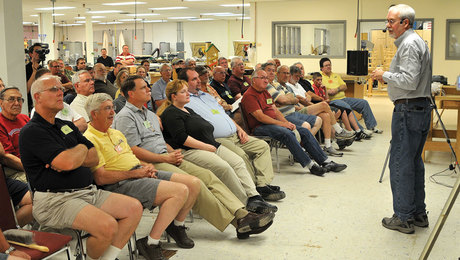 |
Woodworking Clubs DirectoryBrowse our list of clubs and guilds around the U.S. and Canada to find your nearest group |
Question 2:
From Scott:
I have a wood river #62, bevel up smother. I have it razor sharp and I can thin wispy shavings. My struggle is, that when a board feels smooth with my hand, I seem to be just skipping across the high spots. And can never seem to get a full-length shaving or any shaving at all. I recently watch Tom McLaughlin’s video on using a hand plane. Does this just mean I have to keep at hand planing for hours to get that finished surface? I don’t like what sanding does to the finished surface. I’d love to get a hand planed finish!
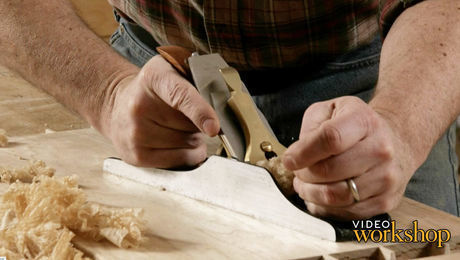 |
Handplane Fundamentals: Flat and SmoothLearn to add delicate chamfers to parts and to prep surfaces for a finish. |
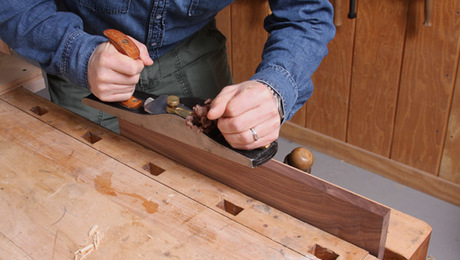 |
Bevel-Up Low-Angle Jack Plane is a Workshop WorkhorseFurniture maker Garrett Hack demonstrates a variety of uses for a bevel-up jack plane. |
Question 3:
From Chris:
What is your recommendation for how to fare (fair) a curved surface. Ive tried bandsawing to a line, spindle sanding best I can and then using a scraper and sandpaper, but it still ends up looking and feeling ridgy. Is there a full proof way to fare an edge, or should I just stick to rectilinear furniture?
 |
Craig Thibodeau’s homemade sandersWhen commercial sanders come up short, Craig modifies them or makes new ones himself. |
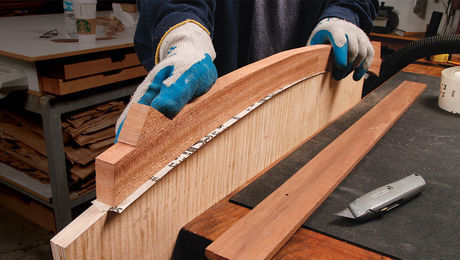 |
How To Make One Curve Match The OtherCraig Thibodeau’s technique uses each curve to refine the other in a back-and-forth sanding process that matches them perfectly. |
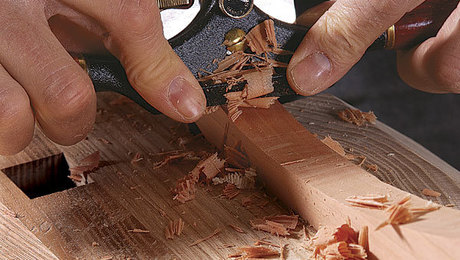 |
Smooth Curves with Hand ToolsTo create silky, sinuous edges on furniture, hand tools are faster than routing or sanding. |
Every two weeks, a team of Fine Woodworking staffers answers questions from readers on Shop Talk Live, Fine Woodworking‘s biweekly podcast. Send your woodworking questions to shoptalk@taunton.com for consideration in the regular broadcast! Our continued existence relies upon listener support. So if you enjoy the show, be sure to leave us a five-star rating and maybe even a nice comment on our iTunes page.





















Comments
When using sandpaper, I think better than quarter inch MDF for fairing curves is thicker MDF kerfed a few times across the width. More compliant and easier to use. Change the spacing of the kerfs to suit the radius of the curve.
Log in or create an account to post a comment.
Sign up Log in